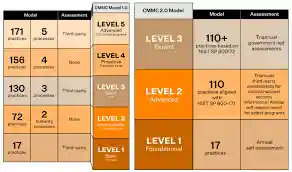Deadlines have a way of sneaking up on teams, especially when it comes to meeting government security standards. CMMC Level 2 isn’t something you can rush through over a long weekend. Preparation takes planning, patience, and a full view of the moving parts involved.
Realistic Timelines for Achieving CMMC Level 2 Readiness
When teams begin preparing for a CMMC Level 2 assessment, the timeline often depends on how far along they already are with security practices. For organizations just getting started, the process typically takes 12 to 18 months, sometimes longer. That’s because the CMMC level 2 requirements demand detailed implementation of security controls, proper documentation, and evidence of maturity over time. It’s not enough to check boxes. Assessors want proof that these practices are part of your everyday operations.
Even organizations that already meet some CMMC requirements often underestimate the time needed to prepare for an audit. You can’t shortcut a maturity model—it has to reflect real, operational security. For contractors working with Controlled Unclassified Information (CUI), meeting CMMC compliance requirements means not only writing policies but showing that they’re enforced and followed consistently. That requires clear roles, records of past behavior, and time for internal audits before the actual assessment happens.
Factors That Speed Up or Slow Down Your CMMC Preparation
No two organizations move at the same pace. Several factors can either help move things along or stretch timelines. Companies that already follow NIST SP 800-171 guidelines, for example, will find many of the CMMC level 2 requirements familiar. That head start can shave months off preparation time. On the other hand, organizations lacking basic cybersecurity hygiene may need to build their foundation from scratch, which adds both cost and time.
The structure and size of your organization also play a role. A smaller company with fewer systems might be able to pivot faster, while larger enterprises need more time to align departments, roll out policies, and train teams. Leadership buy-in is another piece that can make or break momentum. When leadership supports the process, assigns responsibilities clearly, and provides enough resources, teams avoid spinning their wheels—and that alone can cut the timeline in half.
Streamlining Policy Development to Shorten CMMC Prep Time
One area where organizations often lose time is policy development. CMMC compliance requirements call for clearly defined and documented policies that align with each of the security controls. These aren’t templates you can just download and file away—they have to reflect how your organization truly operates. If policies are vague, outdated, or don’t match day-to-day procedures, assessors will spot the inconsistency.
The key to shortening this part of the prep is creating policies that are specific, practical, and tied directly to your IT environment. Pulling in operational leads from different departments can help make these documents accurate and actionable. Once policies are drafted, reviewing them with your security and compliance teams ensures alignment with the CMMC level 2 requirements. Every hour spent building realistic, living documentation is time saved during your CMMC assessment.
Identifying Compliance Gaps Early for Faster Certification
Waiting until the last minute to find out where you’re falling short is one of the biggest delays organizations face. The earlier you identify gaps in your compliance, the better. A gap analysis at the beginning of your prep gives you a clear roadmap and helps you avoid surprises down the line. It also allows more time to fix issues before they grow into bigger problems.
Whether you’re coming from a place of partial alignment with CMMC level 1 requirements or starting fresh, taking a close look at where your practices differ from cmmc level 2 requirements is essential. This step isn’t just about checking controls—it’s about understanding how your systems, processes, and people align with expectations. The more thorough your gap analysis, the more focused and efficient your remediation efforts will be.
Managing Documentation Efficiently to Cut Prep Duration
Documentation isn’t just a requirement—it’s how you tell your story during the assessment. That includes system security plans (SSPs), policies, procedures, and evidence of implementation. When documentation is scattered, incomplete, or inconsistent, your prep timeline can drag on for months. A smart strategy is to centralize documentation early in the process and maintain version control so teams aren’t working off conflicting files.
Many organizations benefit from assigning a documentation lead—someone who ensures that all materials are up to date and accessible. It helps to map each control in the cmmc requirements to its corresponding policy or procedure, making it easier to demonstrate alignment during your CMMC assessment. Strong documentation doesn’t just support certification; it helps teams operate more confidently and respond faster during audits.
Setting Clear Deadlines to Avoid CMMC Assessment Delays
Without a solid project timeline, CMMC preparation can easily fall off track. It’s common to start with high energy, only for momentum to fade when deadlines aren’t defined. Setting internal milestones keeps everyone accountable and focused. Clear deadlines help track progress, highlight areas falling behind, and maintain steady movement toward certification.
CMMC assessments are scheduled based on readiness, not hope. That means you don’t get on the calendar until you’re actually prepared. By treating your internal readiness plan like a formal project—complete with due dates, assigned owners, and status check-ins—you create a structure that mimics the rigor of the real assessment. This reduces the risk of last-minute scrambles and increases your chances of passing on the first try.






